Product adoption is a crucial process in SaaS business because users who have successfully adopted your product are the users you’ll likely retain in the long run.
However, adoption is a long and winding road with many potential obstacles that might deter users from your product.
In this article, we’ll discuss five of those obstacles and suggest solutions to overcome them.
The first obstacle is a fairly obvious one: people not knowing about your product.
A Lack of Product Awareness
The SaaS industry has seen strong growth for a number of years now. Today’s SaaS landscape counts approximately 30,000 companies, all with at least one product in the race.
The marketing SaaS niche alone carries more than 8,000 products, which tells us that even specialized software faces heavy competition.
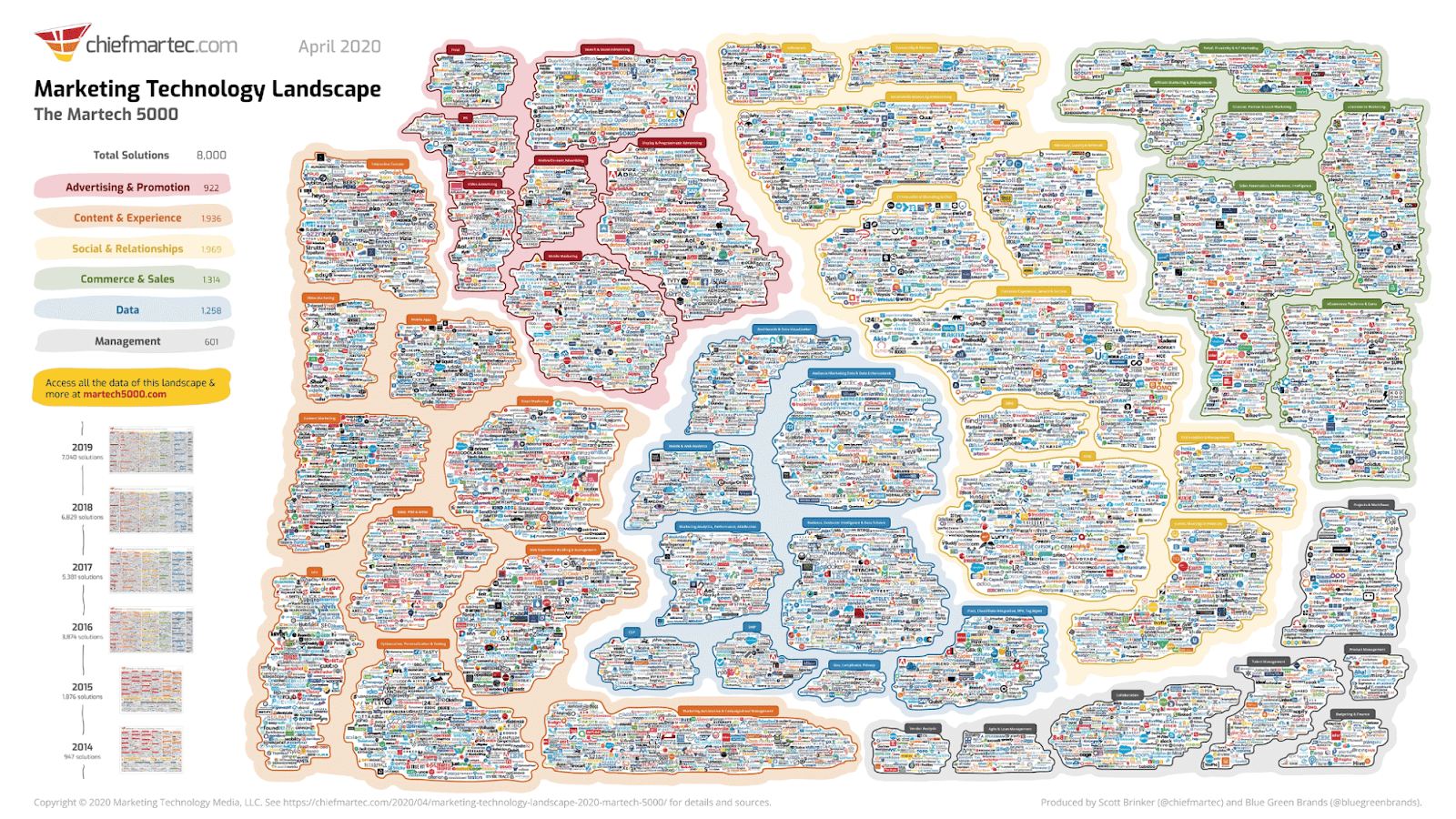
Source: Chiefmartec
In these circumstances, it’s quite easy for your product to slip under the radar and go unnoticed by your intended audience.
And if potential customers aren’t aware of what you offer, you can hardly expect good product adoption rates.
In SaaS business practices, raising awareness is always the first step toward product adoption because it represents the foundation on which all subsequent use is built.
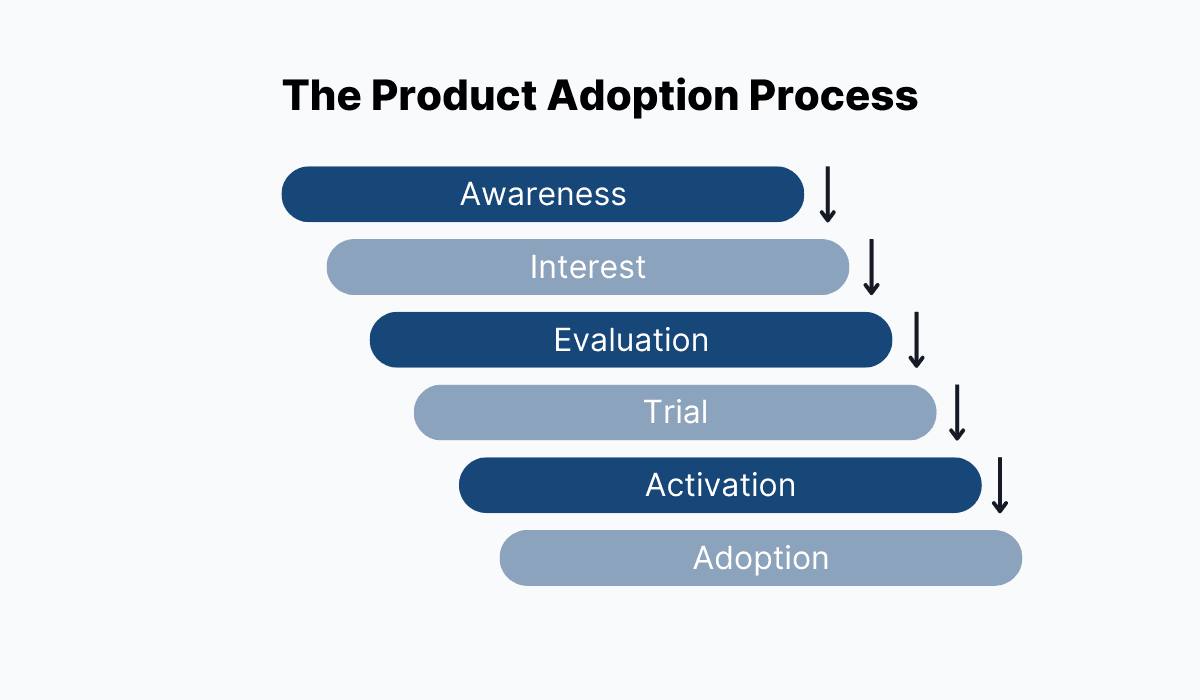
Source: Archbee
Awareness is also your first obstacle because connecting to customers in a saturated market is one of the biggest challenges you’ll face on the way to success.
So, how do you raise awareness and attract the right type of audience to your software?
The key lies in finding your future users in the right place and at the right time with a carefully planned marketing strategy.
Companies have developed their own formulas to achieve this.
Zapier, for example, chose the SEO approach to build awareness for their app integration and workflow automation software.
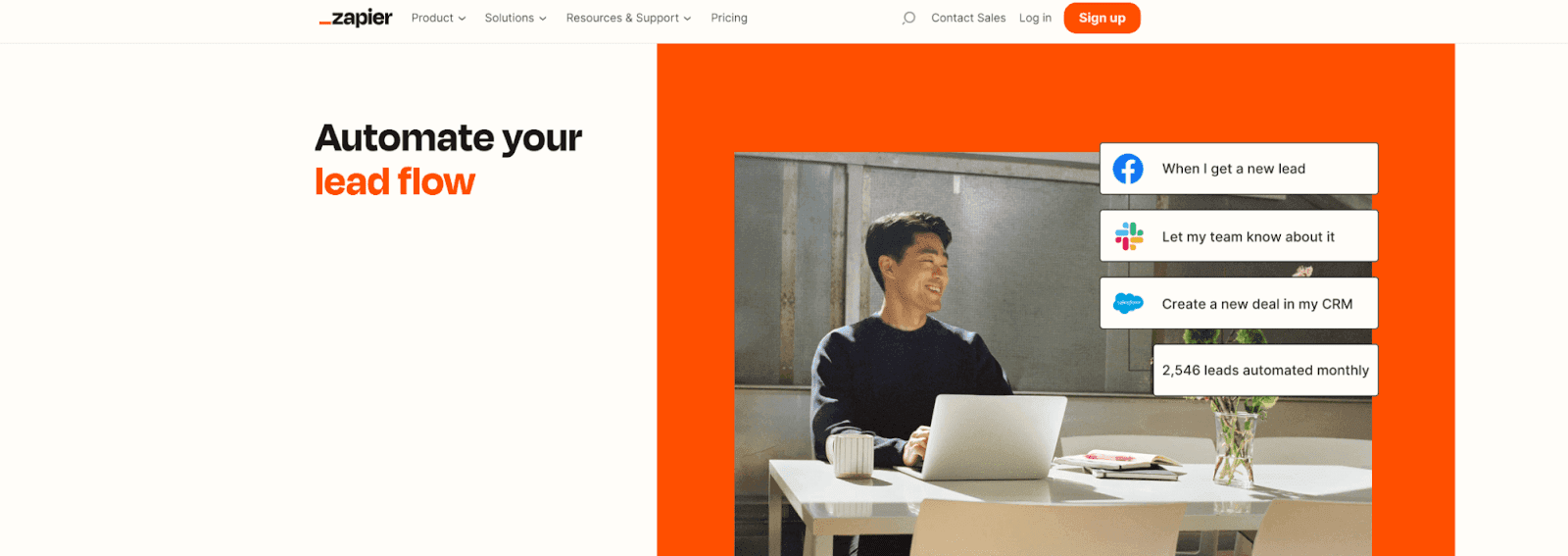
Source: Zapier
They created over 25,000 landing pages to explain how their product can integrate any two web applications users could ever need and then optimized them so that they would rank on Google.
The result is that every user who needs to integrate the apps they use and automate a workflow can find the exact combination they’re using on Google.
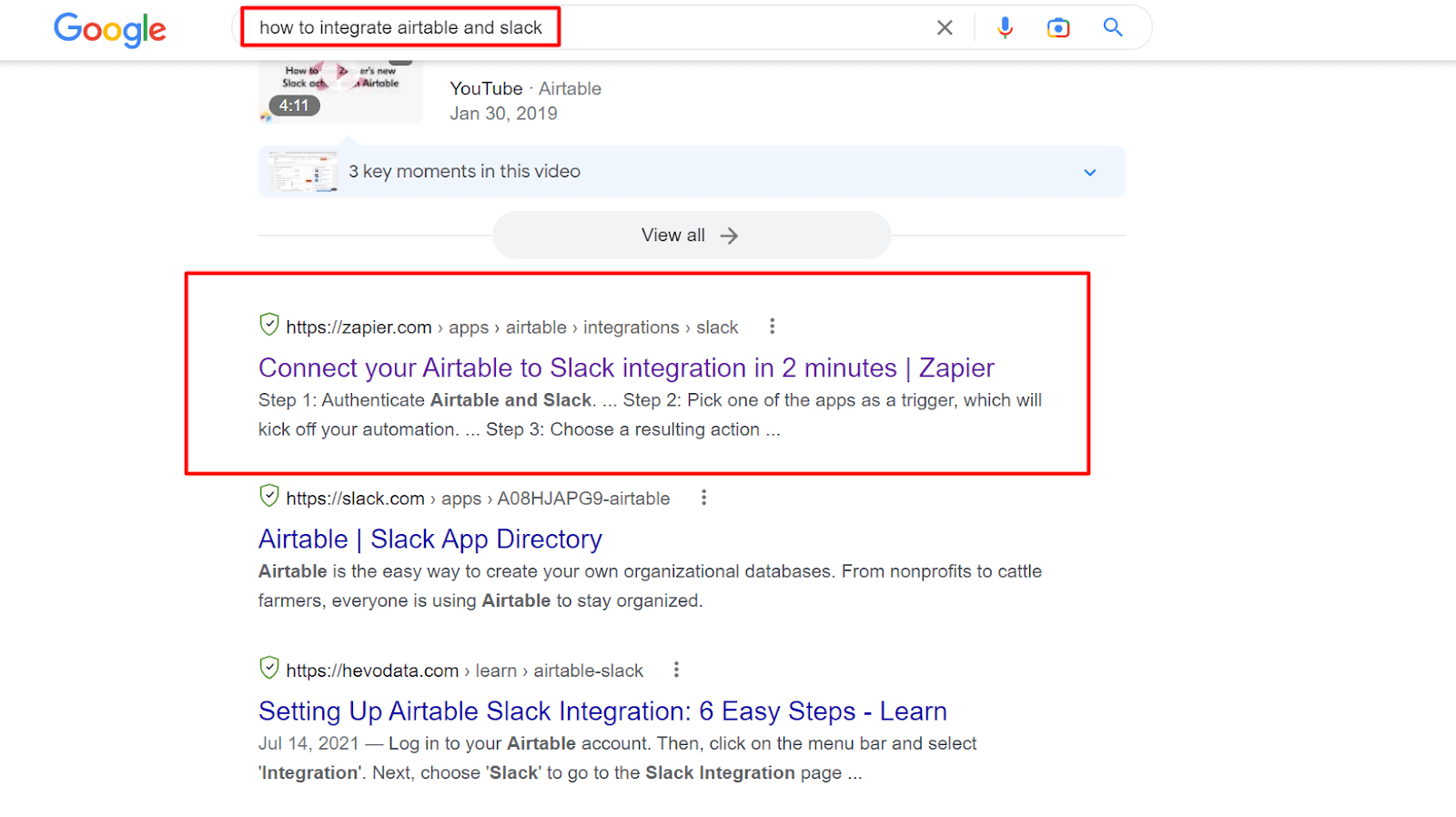
Source: Google
By following Google’s result, the potential customer is transported to Zapier’s page about the integration where they become aware of Zapier and what it can do for them.
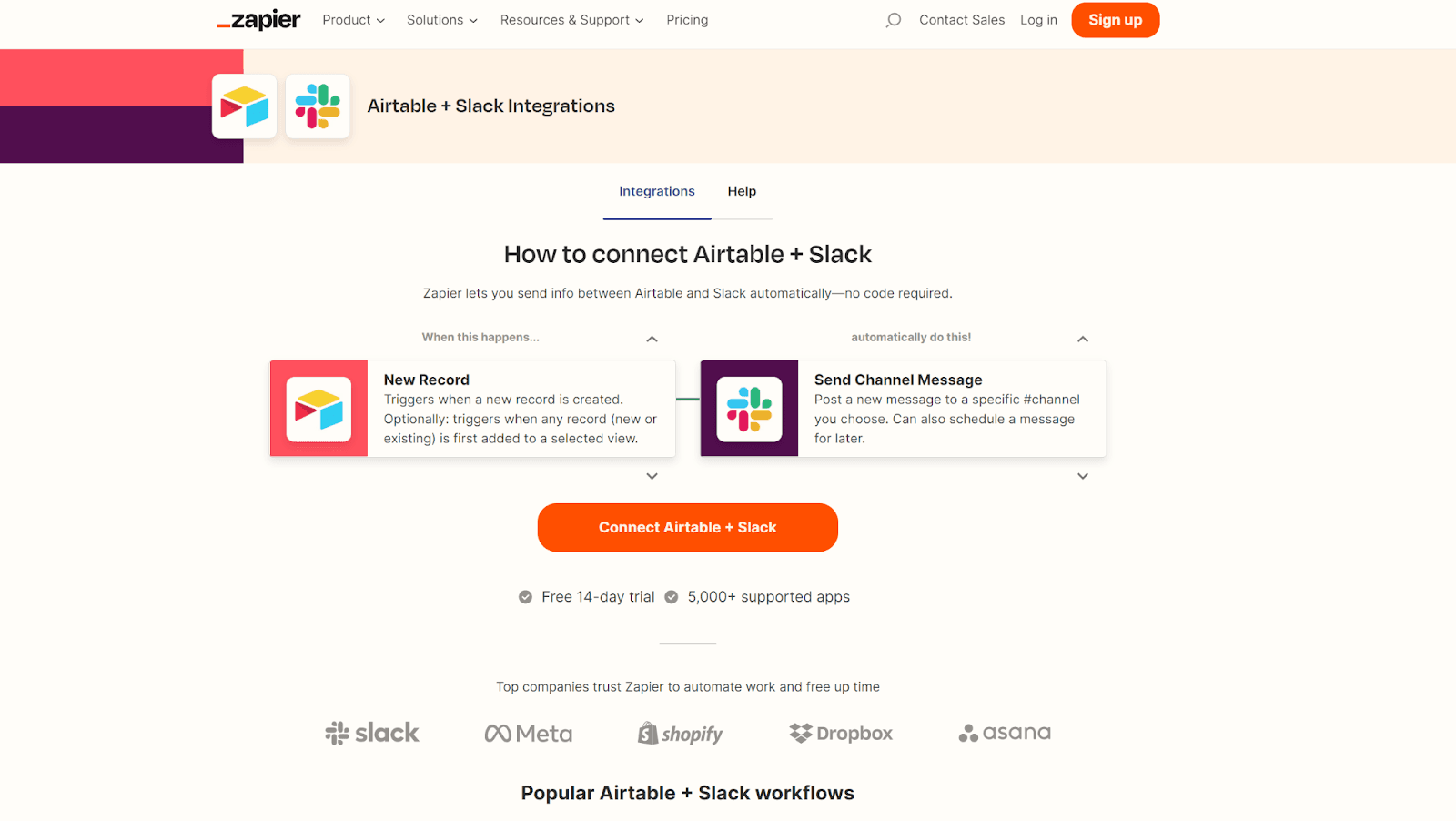
Source: Zapier
The awareness campaign was (and still is) a huge success.
It helped Zapier generate 7.3 million monthly visitors, 53% from organic traffic from landing pages like the one we described above.
As Zapier’s example shows us, overcoming the awareness obstacle can be a painstaking process (25,000 landing pages, all optimized, is no small feat), but the effort is definitely worth it because all of that traffic will result in a high volume of qualified leads who are likely to complete the adoption process.
The Product Doesn’t Fit Into Existing Categories
Every so often, a SaaS founder has an idea so unique and so innovative that it just doesn’t fit the existing categories in the market.
That’s a terrific position to be in, but it carries a great challenge: how do you create a user base in a market that doesn’t exist yet?
Obviously, you’ll need to carve out a market for yourself, but that takes time. And in SaaS business, time is a luxury very few can afford.
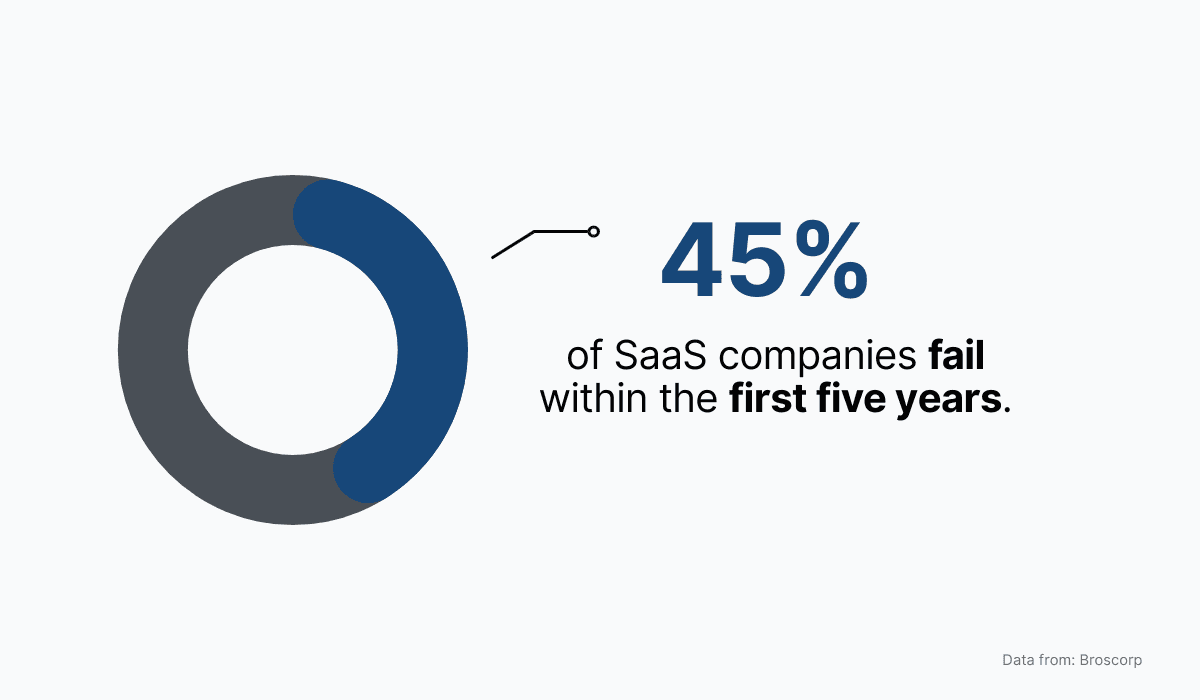
Source: Archbee
So, the obstacle here is to get people interested in a new type of product and convince them to adopt it before your company runs out of money.
Two founders that found themselves in this situation ten years ago were Josh Haas and Emmanuel Straschnov.
They wanted to build a platform that would allow anyone to build entire web applications with zero coding.
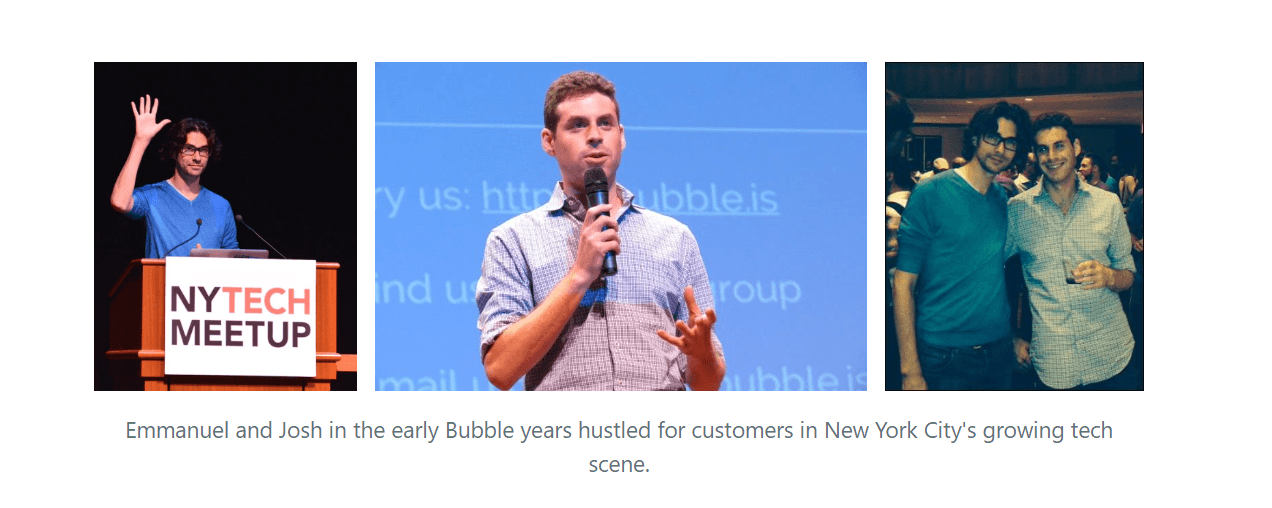
Source: Bubble
Their product would be named Bubble.
The idea was revolutionary. As Vivienne Chen from the company explains:
It was an ambitious project. When Josh and Emmanuel started working on Bubble, “no-code” tools were not really a category of their own. Squarespace, Wix, Weebly were already gaining traction as a way to build websites without learning HTML and CSS. But coding was still considered the gold standard of technology creation.
Investors shied away from the platform because they were convinced development couldn’t work without developers and companies wouldn’t be sure what to do with the product.
But Haas and Straschnov were undeterred. They were convinced users would love Bubble, even if it didn’t fit into the SaaS landscape of the time.
So they brought their platform to the place where true innovators and tech enthusiasts gather: Product Hunt.
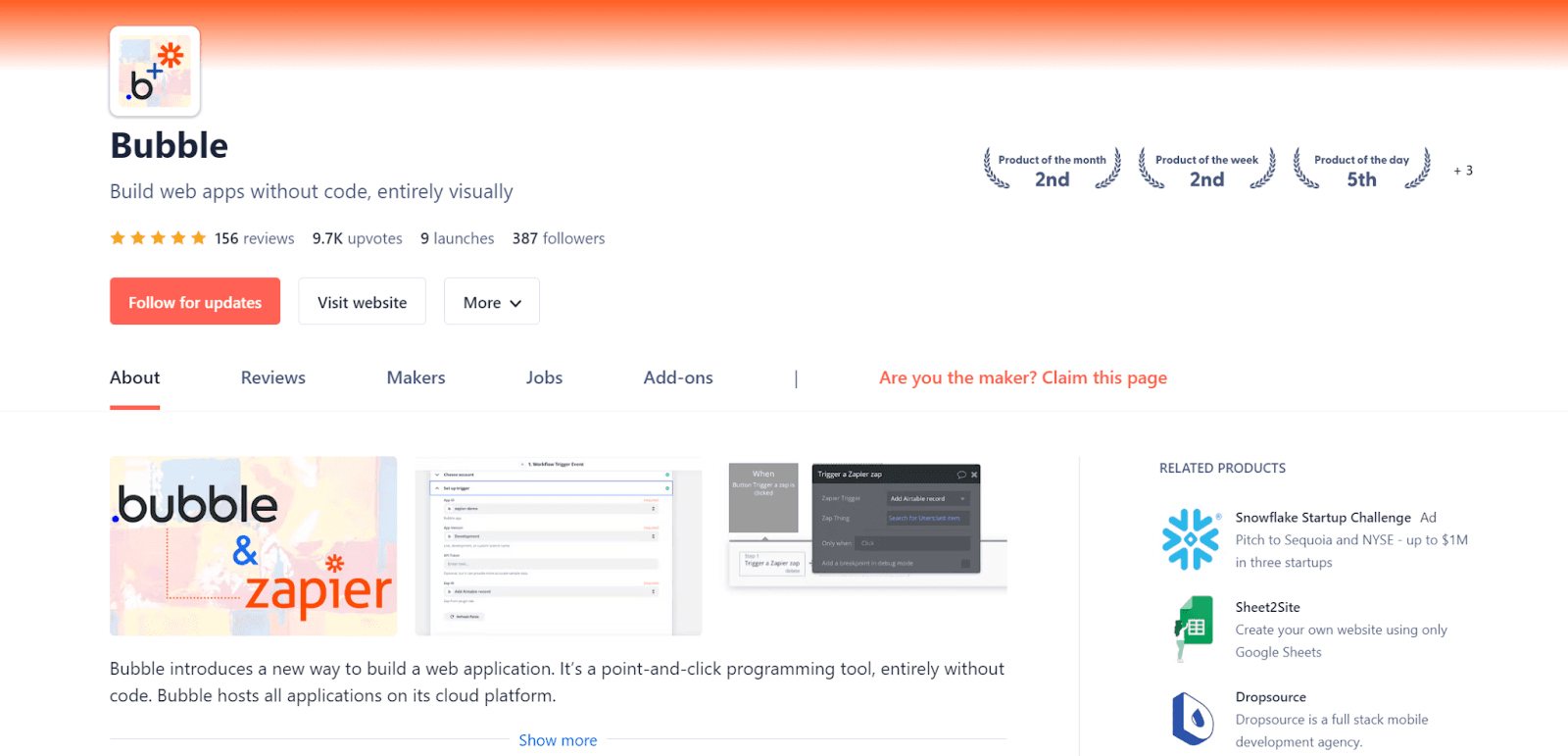
Source: Product Hunt
This turned out to be just the right move. Bubble was the highest-voted product at that time on Product Hunt and got more than 3,000 users in a very short period.
The explosion in popularity soon convinced investors that Bubble did hold appeal after all and large-scale investments soon followed.
Today, Bubble has almost 1.5 million users and was even named one of Fast Company’s Most Innovative Small and Mighty Companies of 2021.
Moral of the story, if your product isn’t seeing high adoption rates because of its inability to fit into existing categories, market it to innovators and tech-savvy enthusiasts and let them prove that your software is worth the investment.
The Customers’ Resistance to Change
This obstacle becomes a particular problem later in the life cycle of your SaaS product.
Once the mainstream audience adopts your product, there’s going to come a time when you’ll need to start convincing the more stubborn and skeptical members of your intended audience.
In terms of product adoption, these users are often called the late majority and laggards.
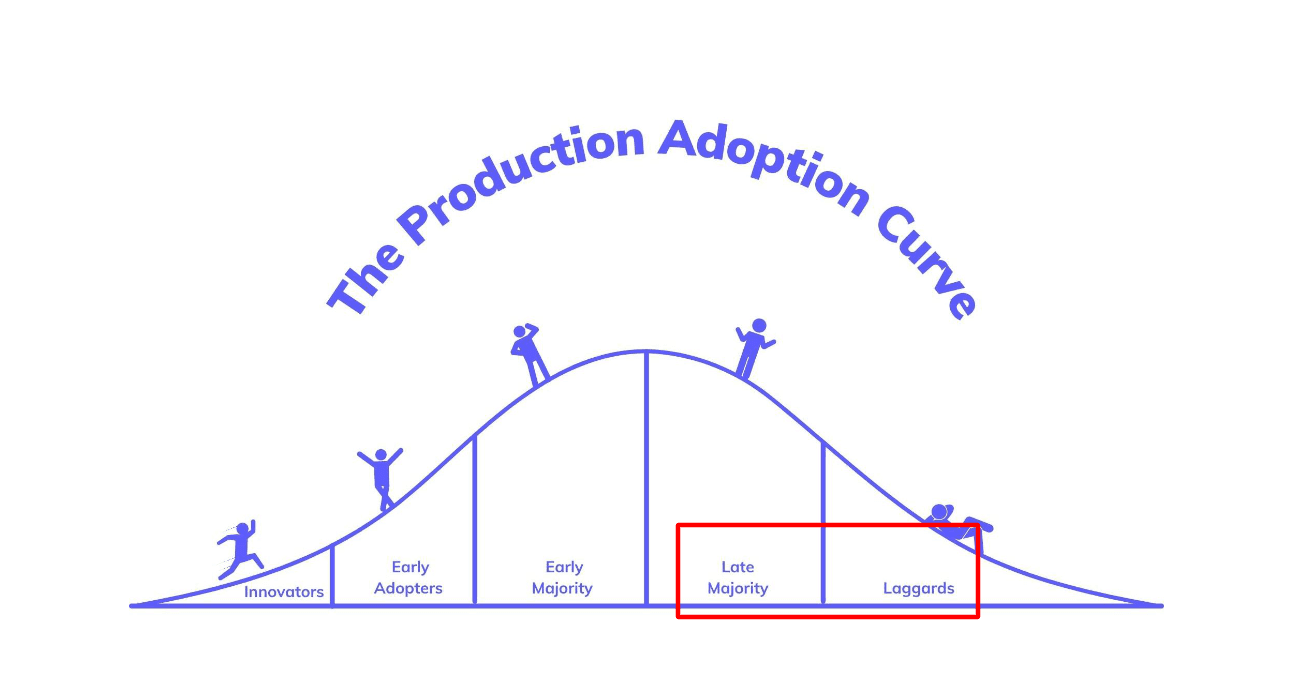
Source: Appcues
There are a lot of reasons why these audience segments might be hesitant about making the switch to your software.
For example, if you’re in the B2B space, business leaders might be worried about the ROI they’re getting by making a change, or they could be predicting a disruption in the workflow that will endanger their business.
To mitigate these concerns, you simply need to offer solutions to make the switch to your software as easy and painless as possible for the client.
So, if you have potential customers who are worried about losing important data and experiencing downtimes while they migrate to your product, a good solution might be to work on features that will facilitate that migration.
For example, Asana, the work management platform, offers a CSV importer that makes importing project data from other work management tools and spreadsheets much easier.
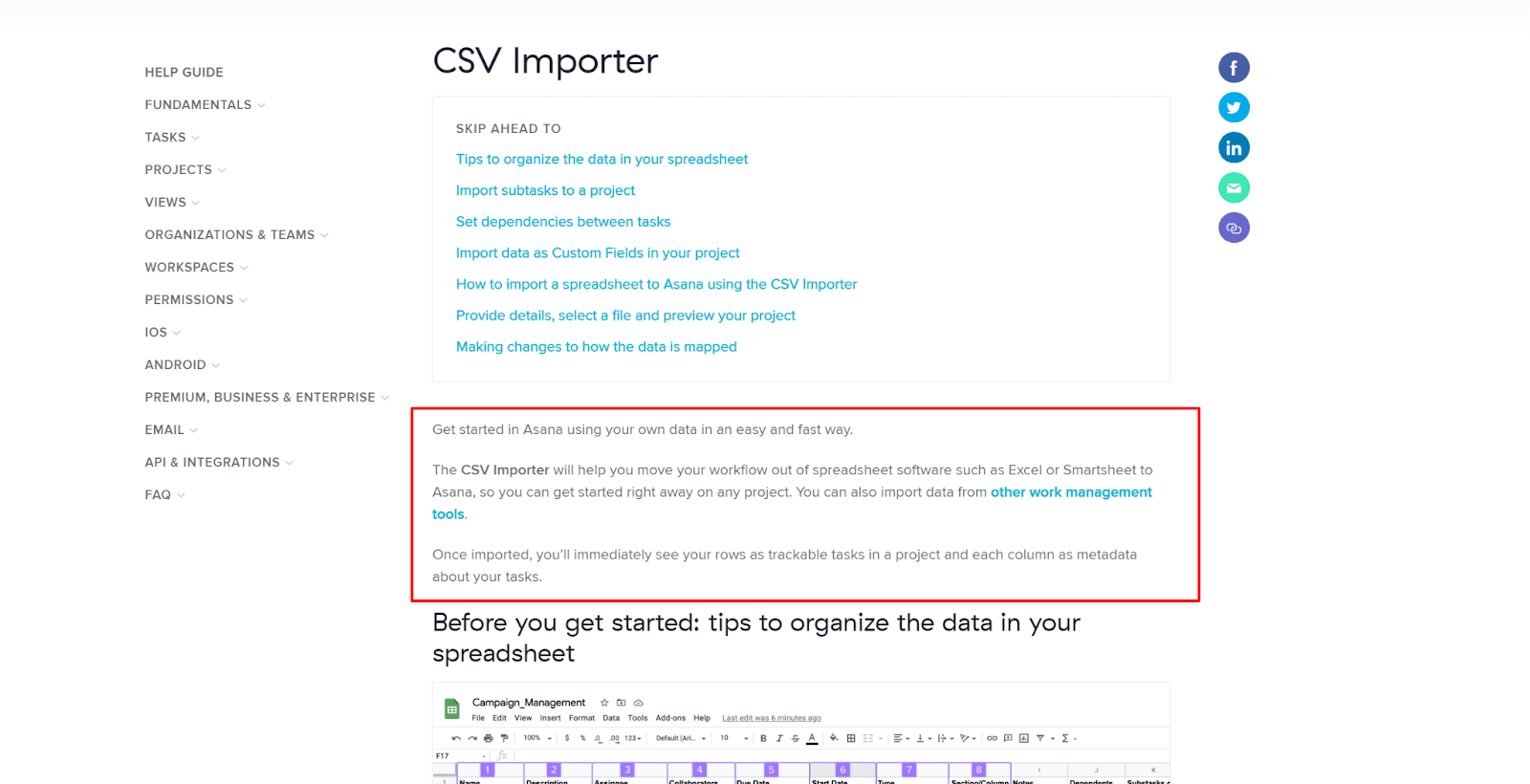
Source: Asana
By offering this kind of service, Asana makes purchasing decisions easier for clients who want to make the switch but are worried about disrupting their projects.
Another major concern is learning to use a new platform or tool from scratch. The best way to deal with this objection is to commit to educating your new and potential users.
Hubspot is an industry leader in this regard.
It offers user onboarding services that consist of helping new customers set up the software, learning how to use it, and achieving their first goals.
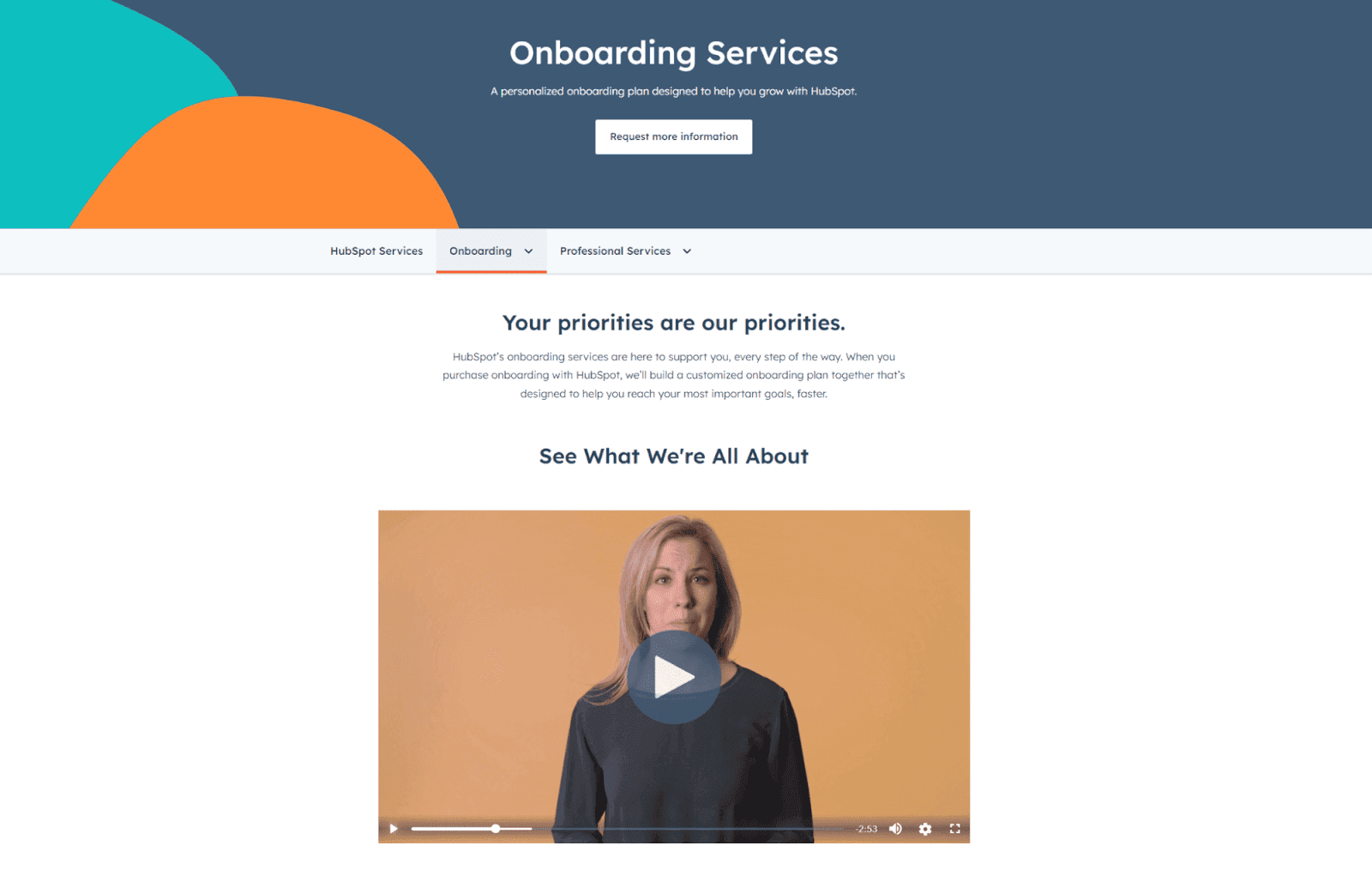
Source: Hubspot
In conclusion, yes, some customers will be reluctant to adopt your product and they will need some convincing.
But remember that this reluctance comes from real concerns. Put in the effort to eliminate the sources of your potential customers’ worries, and you’ll remove this obstacle permanently.
The Product Is Not a Good Market Fit
Software products have the best chance of being widely adopted when they answer a real need in the market.
After all, why would users go through the trouble of integrating your product into their routine and learning to use it successfully if it doesn’t solve a problem they’re dealing with?
This seems like a simple truth, but it’s what SaaS founders often get wrong.
They seem to be so convinced that they have a good idea on their hands that they neglect to check if the market actually needs what they’re offering.
Unfortunately, this rarely ends well, and a bad market fit is currently the second biggest reason why startups fail.
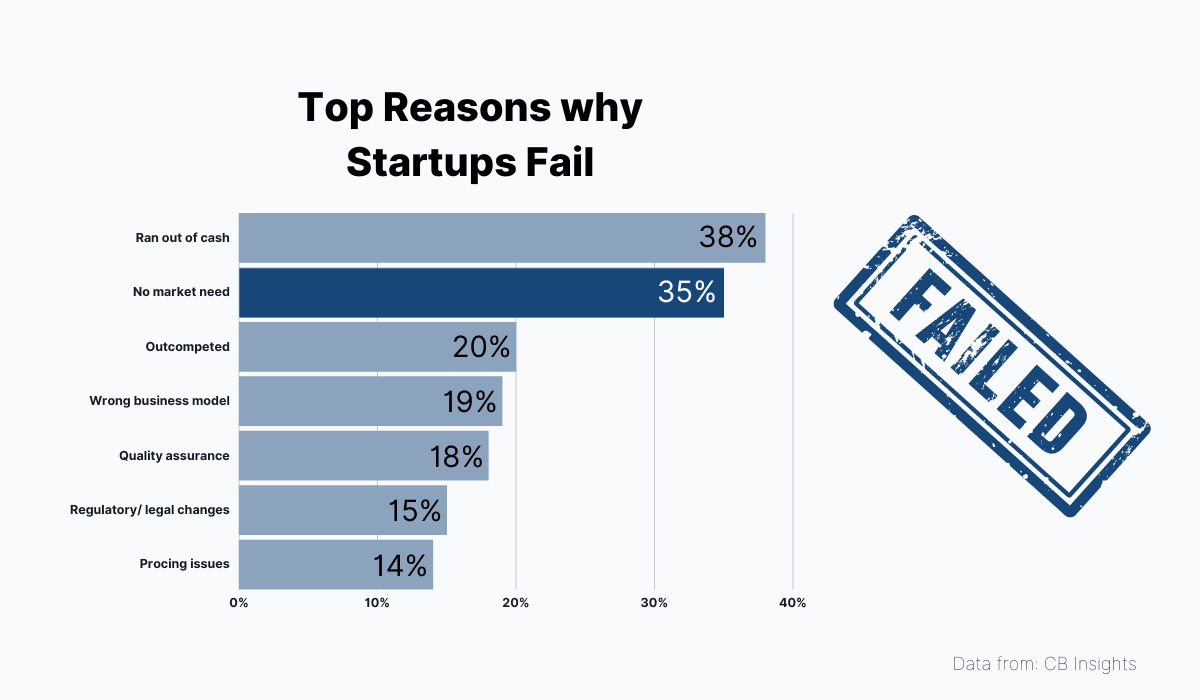
Source: Archbee
The solution to this is to always keep your finger on the pulse of your audience and monitor closely how well your product serves them.
There are two essential ways of going about this. The quantitative and qualitative approach. Both are needed if you want to be well-informed about how your product is doing in the market.
In SaaS business, quantitative research on market needs is usually done using analytics software.
Analytics tools can help you gain insights into user behavior and show you if your users are actively interacting with your software or churning because they can’t find the value in it (indicating that the product isn’t a good fit for your market).
Some excellent tools we can recommend here include Profitwell, Heap, and Fullstory.
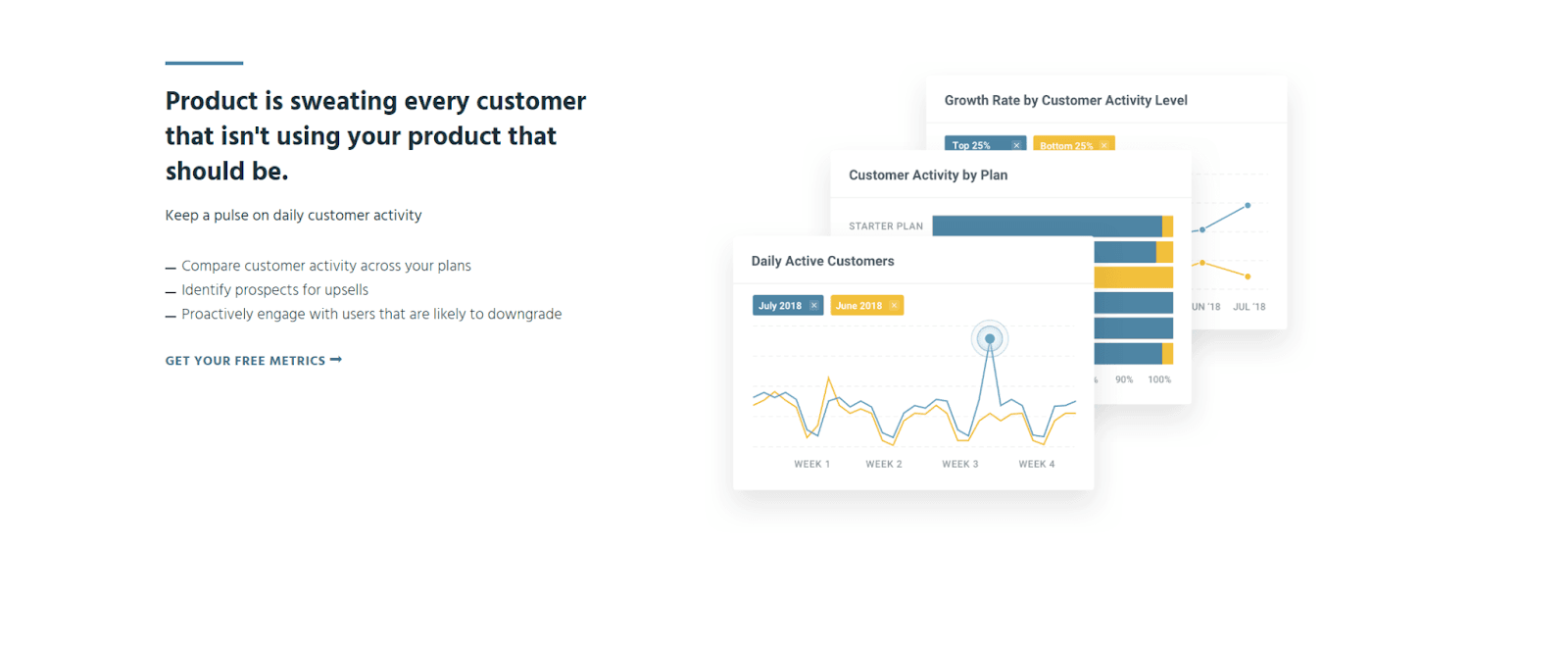
Source: Profitwell
Analytics software gives you access to big data about your users, sorted and organized to provide insights that allow you to pivot and adapt your product to the needs of your audience.
That’s quite different from qualitative research into your audience, which won’t provide as much data but will enable you to dive deeper into your market's wishes and needs.
Qualitative methods are all about collecting feedback from real users to gain knowledge about what users really want, again giving you a chance to adapt your software to the market.
There are many ways of gathering feedback, among them:
- Sending out customer surveys
- Maintaining a presence on social media
- Interacting with customers directly (using your support and success teams)
- Monitoring review sites such as Trustpilot and Capterra
You can even feature a “suggestion box” on your website to allow users to talk about features they want to see in your future updates.
At Archbee, we offer such a resource in the form of our Product Roadmap.
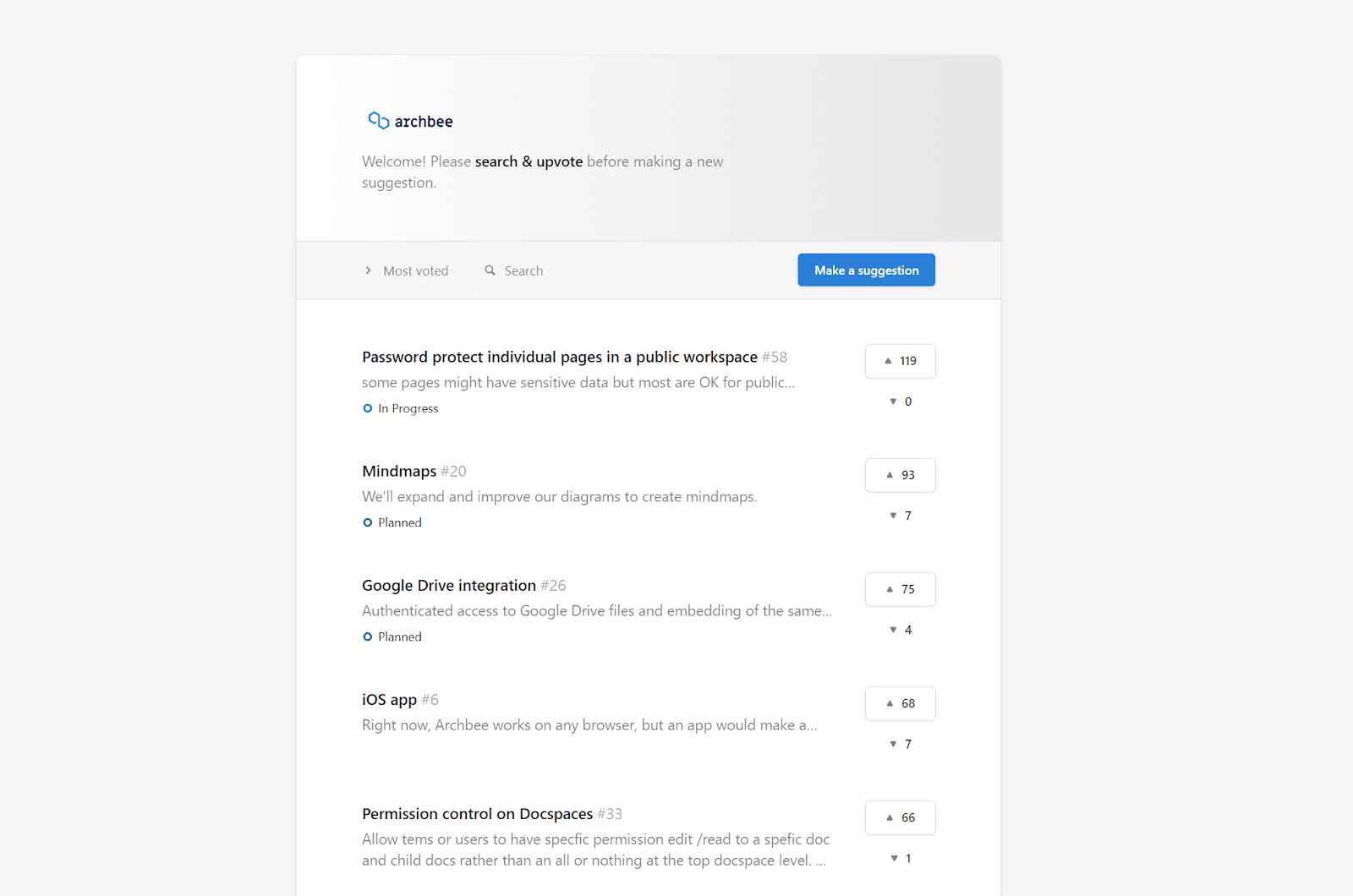
Source: Archbee
This feature is our way of letting users drive product development. It helps us achieve a more complete fit with the market because we aim to follow through on what the market wants.
Let’s recap.
Your product needs to fill a void in the market if you want it to be widely adopted by users.
And the only way to know what the market needs is to closely monitor your users and adapt the product according to their behavior and feedback.
The Product Is Difficult to Use
The final entry on this list of obstacles has to do with the everyday, practical use of the product.
Even if the product is a good solution to a real problem that the users are facing, clunky or unintuitive use could still prevent high adoption rates.
We can prove this by looking at customer churn statistics for SaaS products.
According to research, 14% of users abandon software because they find it too difficult to use.
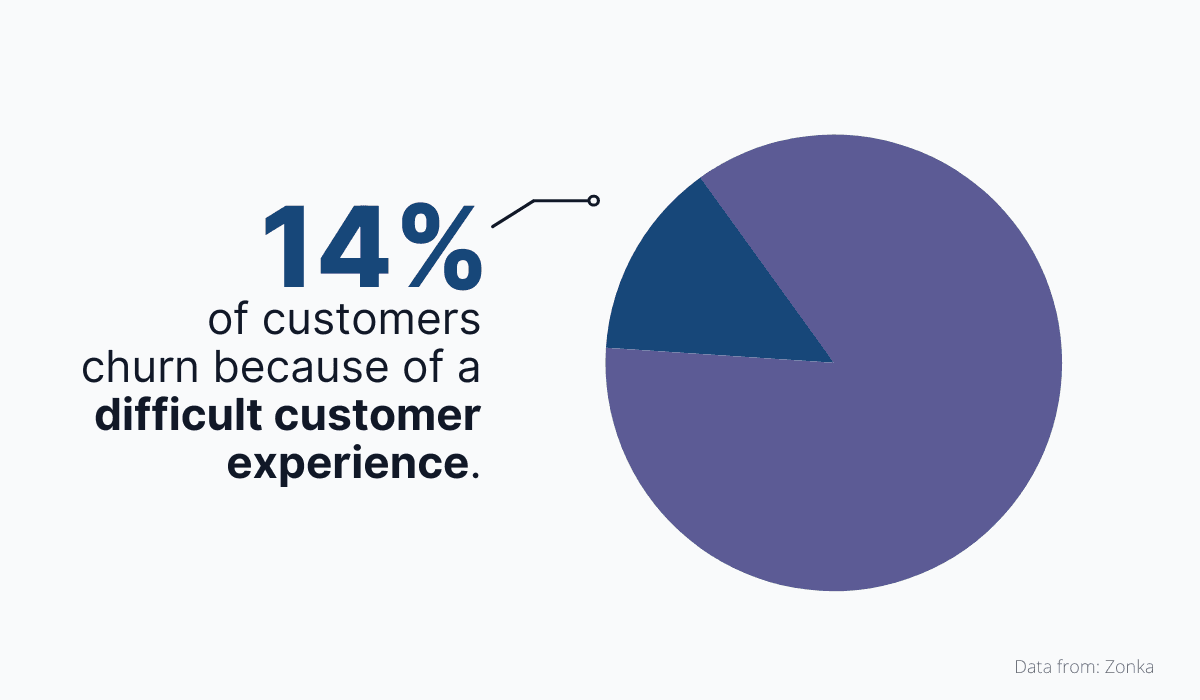
Source: Archbee
To overcome this obstacle, you can apply the methods discussed in the last section.
User analytics and feedback can provide you with a wealth of information about which features or tasks users are having problems with so that you have a starting point for working toward a more comfortable user experience and, consequently, better adoption rates.
Outside of improving user experience, you should also look for ways to support correct and successful usage with informative resources, such as an online product knowledge base.
Practically every SaaS product is supported by a comprehensive knowledge base these days, and for good reason.
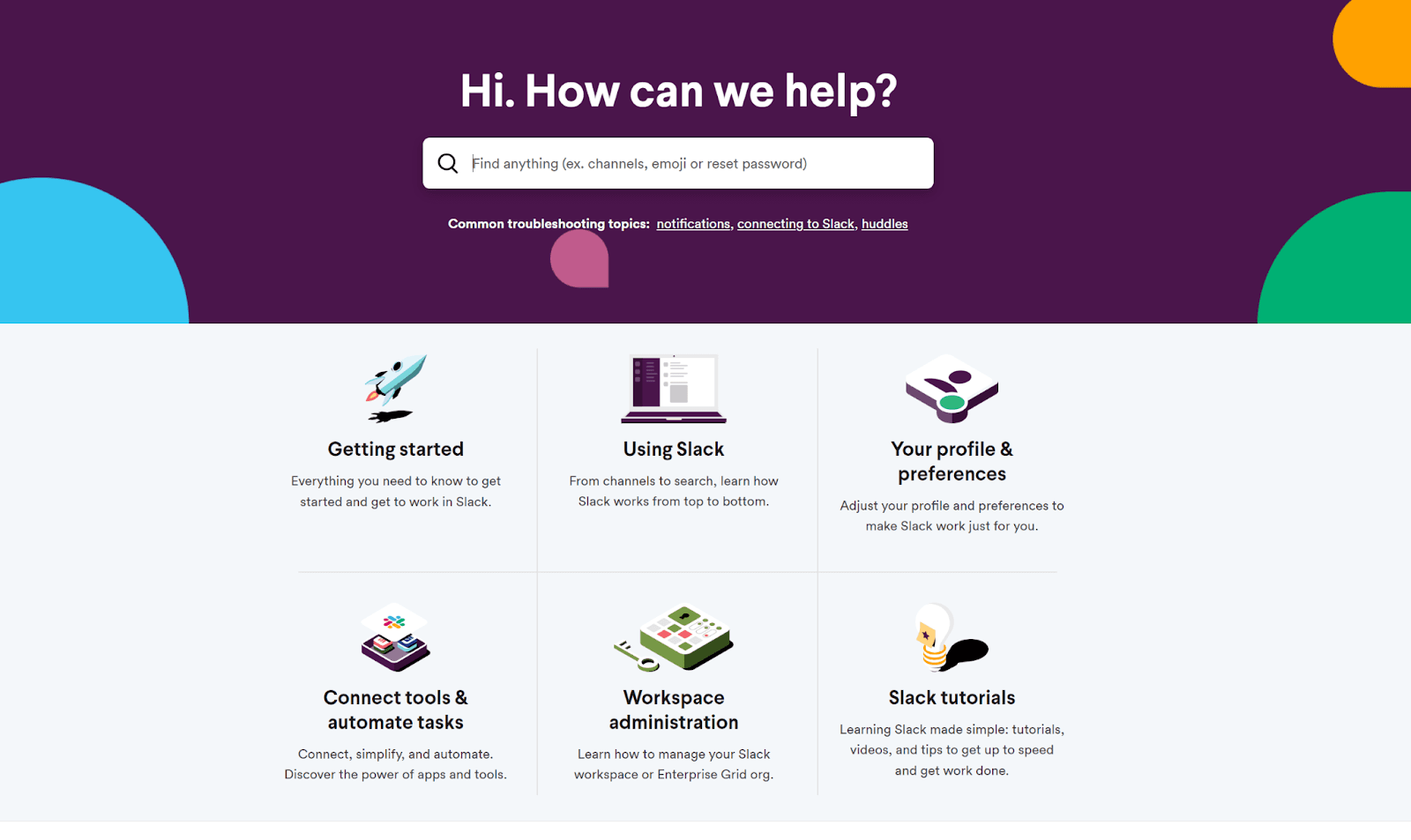
Source: Slack
This kind of resource holds every bit of information that a user needs to operate the software without difficulty. Visiting a knowledge base, users can find resources such as:
- Installation and setup guides
- Tutorials for different features and tasks
- Troubleshooting and FAQ sections
So, every time a user encounters a complication in their experience with the product, they can look up a solution in the knowledge base and continue using the product.
That makes complete adoption much easier to achieve.
Knowledge bases are created using documentation software such as Archbee that enables users (technical writers, developers, marketers, support staff, and anyone else from the company) to create knowledge articles using text, multimedia, and even code as easily as they would write a Word document.
And since Archbee has advanced publishing capabilities, you can also upload those articles online to your knowledge base in just a few clicks.
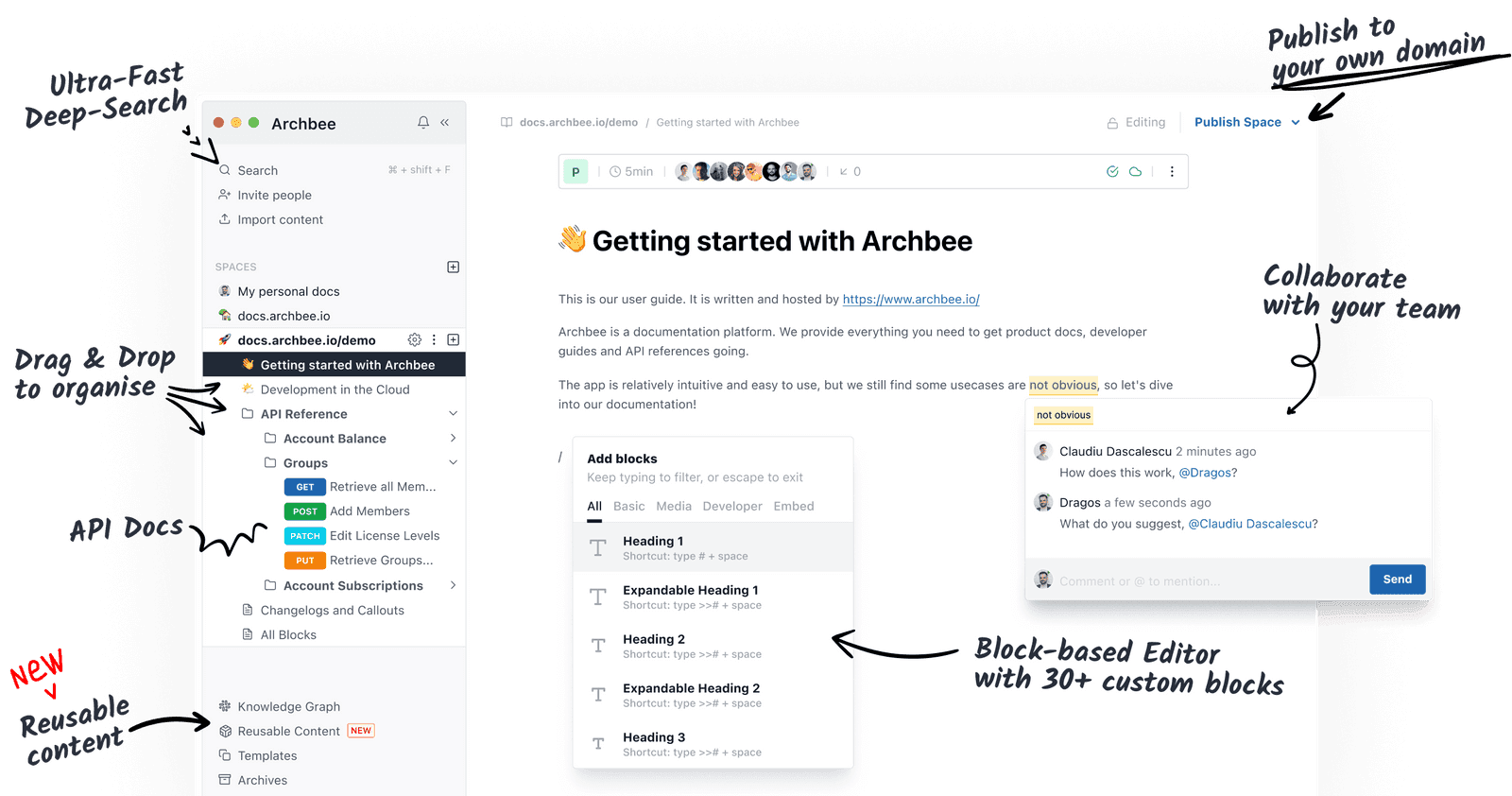
Source: Archbee
The truth is that software isn’t completely intuitive to use and there’s always a learning curve to account for.
Still, if you want to keep adoption high, you’ll need to continually work to make that user experience easier and more comfortable.
Conclusion
Obstacles to successful user adoption can come from various sources. They can stem from the characteristics of your product, as well as the nature of the market you’ve chosen to compete in.
Fortunately, every one of those obstacles can be overcome by paying extra attention to the needs and habits of your users.
So do your best to track usage, follow the trends in your market, and, most importantly, ask users what they need from your product to efficiently remove obstacles to user adoption.
Try Archbee's full range of features with our free 14-day trial.
Frequently Asked Questions
Lack of awareness. In a crowded market, even great products get overlooked if your ideal customers never hear about them. Start by clarifying your positioning and who you serve, then meet those users where they search and learn. Proven tactics include SEO and helpful content, listings on review sites, community participation, targeted ads, partnerships, and founder-led thought leadership. Track awareness with metrics like organic traffic, branded search volume, referral traffic from directories/communities, and share of voice.



